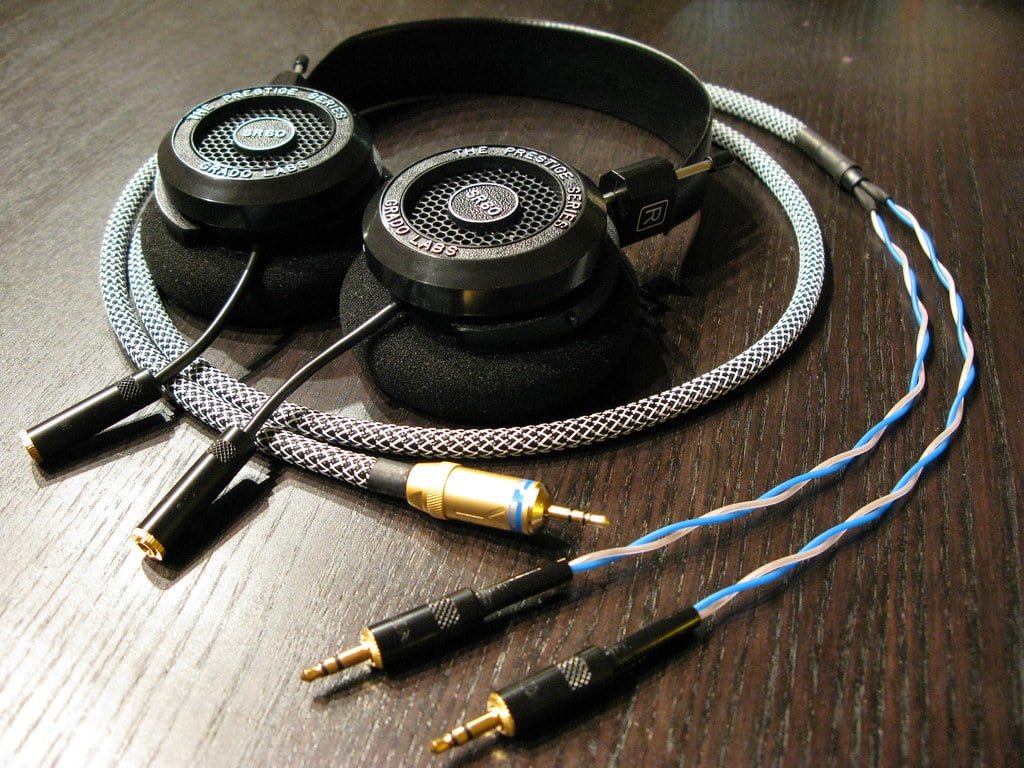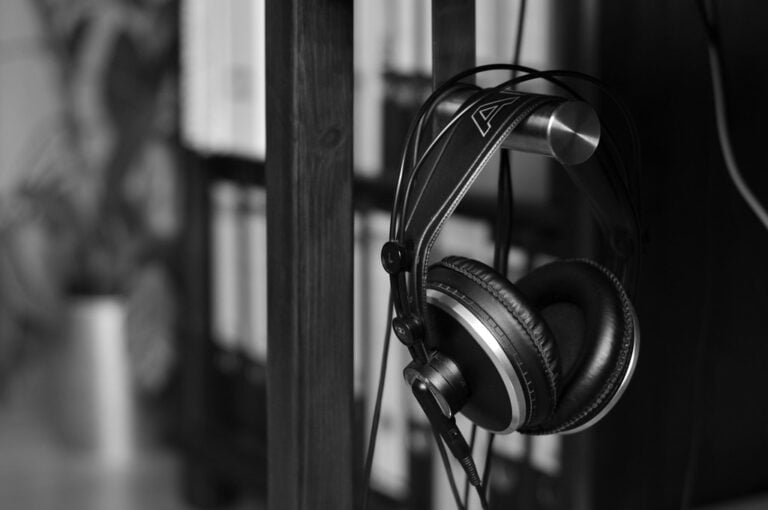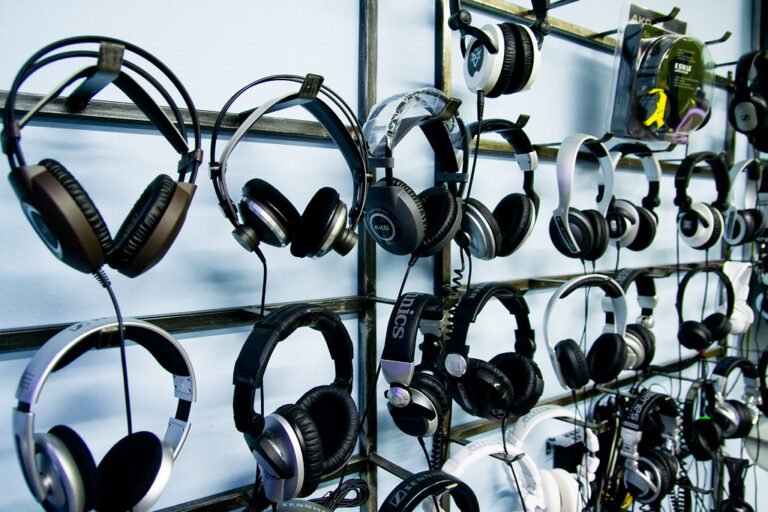The Impact of Cable Quality: Upgrading Headphone Cables for Better Sound
Upgrading headphone cables to high-grade materials like silver and copper greatly enhances sound quality by improving conductivity and reducing signal loss and distortion. The selection of cable material, insulation for longevity, shielding against interference, and connector quality all play vital roles in achieving a superior audio experience. Investing in upgraded cables not only enhances sound quality but also guarantees a more reliable and consistent performance over time. Explore how these factors collaborate to elevate your audio experience.
We are supported by our audience. When you purchase through links on our site, we may earn an affiliate commission, at no extra cost for you. Learn more.
Cable Material Impact on Sound Quality
When assessing headphone sound quality, the selection of cable material significantly impacts the overall auditory experience. Audio cables play a vital role in determining the sound signature that users perceive. Copper cables, recognized for their high conductivity and affordability, offer a warm, rich, and textured sound profile. This attribute makes them popular among audiophiles seeking a pleasing and full-bodied listening experience. On the other hand, silver cables are renowned for providing brilliance, liveliness, and a spacious soundstage. Despite being more expensive, silver cables excel in detailed sound reproduction, making them an excellent choice for users who prioritize clarity and precision in their audio.
Gold cables introduce warmth, weight, and dimension to the sound, enhancing the overall listening experience with their unique tonal qualities. While less common, gold cables appeal to individuals looking for a distinct audio presentation. Hybrid cables combine the strengths of different materials like copper and silver to strike a balance between warmth and detail in sound reproduction. This blend offers users a versatile sound signature that combines the best of both worlds, catering to a wider range of preferences. To sum up, the choice of cable material is an essential factor in shaping the sound characteristics that users perceive, underscoring the importance of selecting the right audio cables to suit individual preferences and listening styles.
Importance of Insulation for Durability
Quality insulation materials such as Teflon and PVC play a vital role in protecting headphone cables from external elements like moisture and abrasion. These materials are essential for enhancing the cable’s lifespan and ensuring its durability over extended use. The choice of insulation directly impacts the cable’s ability to maintain signal purity and minimize interference, ultimately influencing the overall sound quality experienced through the headphones.
Insulation for Cable Protection
Using high-quality insulation materials in headphone cables is essential for ensuring their durability and protection against environmental factors. The insulation plays a critical role in safeguarding the audio signal within the cable from moisture, oil, and abrasion, thereby preserving signal integrity and sound quality. Proper insulation choice directly impacts the longevity and reliability of headphone cables by preventing damage and signal loss. Materials like Teflon and PVC are commonly utilized for insulation due to their ability to offer excellent protection, enhancing the lifespan of the cables. Quality insulation is paramount for maintaining peak performance and reducing the risk of signal interference or degradation, ensuring a consistent and reliable audio experience.
Enhancing Cable Lifespan
To enhance the lifespan of headphone cables, the selection of insulation material is essential for ensuring durability and protection against environmental factors. Quality insulation materials like Teflon and PVC shield cables from moisture, oil, and abrasion, safeguarding against wear and tear. Proper insulation not only preserves cable integrity but also maintains signal quality over time. Insulation quality directly impacts cable durability, preventing damage and signal loss. Investing in high-quality insulation materials is important for headphone cables to resist environmental factors and maintain peak performance throughout their lifespan. Strong insulation plays a key role in protecting cables, ensuring longevity, and preserving the signal quality for an enhanced listening experience.
Durability of Cable
The durability of headphone cables heavily relies on the effectiveness of the insulation material in safeguarding against environmental factors such as moisture and abrasion. Quality insulation is essential for maintaining signal transmission integrity and preventing breakage. Insulation acts as a protective barrier, shielding the cables from external elements that could compromise their longevity. By selecting headphone cables with robust insulation, one can guarantee a longer lifespan and consistent performance. Investing in cables with high-quality insulation not only reduces the risk of damage but also minimizes signal degradation over time. Hence, when considering the durability of headphone cables, the role of insulation in combating environmental factors and preserving signal quality cannot be overstated.
Shielding Against Interference
Effective shielding in headphone cables is paramount in preventing electromagnetic interference and radio frequency interference from compromising the audio signal. Shielding materials such as foil and braided shielding play a vital role in maintaining a clean and undistorted signal transmission. Proper shielding techniques are essential for blocking external electromagnetic signals and preserving signal integrity.
Noise Reduction Techniques
Implementing proper shielding techniques in headphone cables is essential for minimizing noise and distortion in the audio signal. When looking to reduce interference, the following methods are commonly employed:
- Foil Shielding: Utilizing a thin layer of metal foil to wrap around the cable, providing excellent protection against high-frequency interference.
- Braided Shielding: Interweaving strands of metal to form a dense shield that offers improved flexibility and durability.
- Combination Shielding Options: Incorporating both foil and braided shielding for enhanced protection against various types of interference.
- Balanced Cable Design: Due to their construction, balanced cables inherently offer greater noise rejection, requiring less shielding for the best performance.
Signal Clarity Enhancement
To ensure peak signal clarity in headphone audio playback, safeguarding against interference is a vital aspect of cable design. When audio signals travel through headphone cables, they are vulnerable to external electromagnetic interference (EMI) and radio frequency interference (RFI). Without proper shielding, these interferences can result in signal distortion, jeopardizing the overall signal clarity. Employing materials like braided shielding helps to safeguard the audio signals from external disruptions, preserving their integrity and reducing noise during playback. Effective shielding is crucial for maintaining the purity of the audio signal, ensuring that listeners experience high-quality sound reproduction without unwanted distortions. By emphasizing shielding against interference, headphone cables can enhance the listening experience by delivering cleaner and more precise audio.
Interference Blocking Mechanisms
Utilizing advanced shielding materials in headphone cables is essential for blocking electromagnetic interference (EMI) and radio frequency interference (RFI) to maintain audio signal purity.
- Conductive Materials: Shielding materials like foil and braided shielding are employed to reflect or absorb external electromagnetic signals.
- Noise Interference Reduction: Proper shielding is vital for minimizing noise interference in audio cables, particularly over longer distances.
- Signal Integrity Protection: Shielding safeguards the integrity of the audio signal by preventing external interference from distorting the sound.
- Fidelity Maintenance: High-quality shielding guarantees peak performance and fidelity by preserving signal purity and clarity.
Connector Quality for Reliable Connection
Connector quality directly impacts the reliability and longevity of cable connections, essential for guaranteeing stable audio signal transmission. Gold-plated connectors are highly regarded for their superior corrosion resistance, which helps maintain a secure and uninterrupted connection over time. This corrosion resistance is vital in audio setups, where any signal interruptions can lead to distortion or loss of sound quality.
Nickel and rhodium connectors are also popular choices due to their durability and excellent conductivity properties. These materials ensure a robust physical connection while allowing for efficient signal transmission, contributing to overall sound quality. The solder points within connectors are equally important, as they can have a significant impact on the audio signal passing through them. Proper maintenance of these solder points is essential for preserving sound quality and preventing signal degradation.
Advantages of Upgrading Cables
Enhancing sound quality through cable upgrades involves optimizing signal transfer and minimizing interference for a superior audio experience. When considering the advantages of upgrading cables, several key points come into play:
- Improved Sound Quality: Upgrading cables can greatly enhance sound quality by reducing signal loss and distortion. This results in clearer audio reproduction and a more immersive listening experience.
- Different Materials: High-quality cables are often made from premium materials like silver and copper, which offer better conductivity and lower resistance. These materials contribute to enhanced signal transfer and overall audio fidelity.
- Cables Make a Difference: Investing in high-quality cables makes a noticeable impact on audio performance. These cables provide better shielding, secure connections, and efficient signal transfer, ultimately leading to superior sound reproduction.
- Longevity and Performance: Upgrading headphone cables not only benefits sound quality but also improves durability and overall performance. With enhanced durability, minimized interference, and superior signal integrity, users can enjoy a more reliable and consistent audio experience over time.
Enhancing Sound Quality With Better Cables
Upgrading headphone cables can significantly enhance audio quality by optimizing signal transmission and reducing interference for a more immersive listening experience. The quality of sound produced by headphones is intricately linked to the cables used in transmitting the audio signals. Copper and silver are two common materials used in high-quality cables, each offering distinct advantages. Copper cables are known for their excellent conductivity, which allows for efficient signal transfer with minimal loss. On the other hand, silver cables boast even higher conductivity than copper, potentially leading to further improvements in sound quality. The choice between copper and silver cables often depends on personal preferences and the specific characteristics of the headphones being used.
Furthermore, the overall build quality of the cables plays a vital role in enhancing sound quality. Superior shielding in better cables helps to minimize interference from external sources, ensuring that the audio signals remain clear and undistorted. Additionally, high-quality cables provide secure connections that prevent signal loss or disruptions during audio playback. Investing in premium cables can not only improve sound quality but also contribute to the durability and longevity of headphones. For audiophiles seeking the best possible audio experience, upgrading to high-quality copper or silver cables can be a worthwhile decision.







